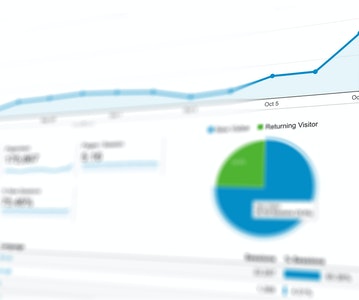This article is about Software Development
A Guide to Data Abstraction in Software Design
By NIIT Editorial
Published on 10/07/2023
In software engineering, data abstraction refers to the process of simplifying large data structures into smaller, more manageable chunks. This allows programmers to concentrate on the data's most salient features without being distracted by complexity. Data abstraction has the potential to enhance the productivity and quality of software development in this manner. In this piece, we'll delve into the value of data abstraction and discuss its practical applications in actual software development projects.
Table of Contents:
- What is Data Abstraction?
- Benefits of Data Abstraction
- Key Principles of Data Abstraction
- Best Practices for Data Abstraction
- Implementing Data Abstraction in Object-Oriented Programming
- Challenges of Data Abstraction
- Case Study: Data Abstraction in Action
- Conclusion
What is Data Abstraction?
In computer programming, data abstraction is a notion that allows complicated data structures and operations to be abstracted away from the nitty-gritty of how the programme is written. This means the user doesn't have to worry about the technicalities of the programme, and can instead concentrate on the core features.
Creating abstract data types (ADTs) that characterise a data structure's characteristics and actions is a common use of data abstraction. Users may interact with these ADTs thanks to a streamlined interface that hides the complexities of the underlying implementation. A stack ADT, for instance, may provide methods like push, pop, and peek that let users add, delete, and examine stack pieces without having to know the stack's internal implementation details.
Procedural abstraction, in which a large piece of code is broken down into smaller, reusable processes or functions, stands in contrast to data abstraction. Data abstraction is concerned with the structures used by a programme rather than its behaviour, which is the subject of procedural abstraction. Data abstraction provides a greater degree of abstraction by decoupling data and behaviour, making it simpler to reason about the programme as a whole.
Better code quality, maintainability, and flexibility may result from using data abstraction. Modifications to the underlying data structures may be done without impacting the programming that utilises them if the implementation details are kept hidden. This makes it less likely that the code will break when changes are made, which in turn makes it simpler to maintain and expand. ADTs' streamlined interface may also improve code quality by making it simpler to read, comprehend, and apply.
Finally, data abstraction may facilitate the replacement of one data structure with another, allowing for more design and implementation flexibility by hiding the implementation specifics.
Benefits of Data Abstraction
The importance of understanding data abstraction cannot be overstated for those working in software development. Some of the many advantages of data abstraction include the following:
1. Easier to Maintain
Data abstraction may reduce the effort required to make changes and updates to the code by isolating the implementation details of a data structure. There is less chance of errors or other problems when making changes to the implementation of the data structure rather than the code that utilises it.
2. Easier to Test
By separating the data structure from the code that accesses it, data abstraction may facilitate testing. This allows for the development of data structure-specific tests, which may guarantee proper operation and ensure that code remains compatible with future implementation modifications.
3. More Scalable
As the complexity of a programme increases, data abstraction might make it simpler to handle the load. The programme may be easily expanded or updated without impacting the programming that utilises it by giving a simpler interface to the data structure. This may make it simpler to expand functionality, boost speed, or process bigger data sets.
4. Better Performance
Because it separates the implementation of a data structure from the code that interacts with it, data abstraction may boost performance. This allows the data structure to be tailored to individual applications, which in turn results in more rapid and efficient programming.
There are many real-world applications of data abstraction's usefulness in modern software development. The Java Collection Framework, for instance, supplies a collection of ADTs for frequently used data structures including lists, sets, and maps. Java programmers may produce more robust and easily maintained software with the help of a streamlined interface to these data structures.
The.NET Framework also includes a number of abstract data types (ADTs) that simplify the management of sophisticated data structures written in C#, such as List and Dictionary.
Data abstraction is also used by many software libraries and frameworks to enhance their own internal architecture. The React.js package, to provide just one example, employs a virtual DOM abstraction to offer a streamlined interface to the actual DOM in the browser. This facilitates the development of streamlined and maintainable multi-tiered web applications.
TensorFlow, another popular toolkit for machine learning, achieves fast computation of huge neural networks via the use of a data flow graph model.
Key Principles of Data Abstraction
The successful development and use of abstract data types depend on a number of fundamental principles upon which data abstraction is founded. Some of the most fundamental rules of data abstraction are as follows:
1. Encapsulation
Data and the procedures used to manipulate it are encapsulated together into a single package. This may guarantee that the data is accessible and updated only via a predetermined set of methods while also hiding the complexity of the underlying data structure.
2. Information Hiding
Information hiding is the practice of keeping secret the specifics of how a data structure is built. This may assist make sure that any modifications made to the data structure's implementation won't break any existing code that relies on it.
3. Abstraction Layers
When you abstract a system into layers, you may make each successive layer's interface more user-friendly. This may be useful for making sure individual pieces of code can be updated or added to independently of one another.
Developers may use several methods, such as those listed above, to put these concepts into practise during software creation.
4. Use of Access Modifiers
Developers may restrict access to data and methods inside a class by using access modifiers like public and private. This helps to ensure that data is only accessible and updated through a predetermined set of ways.
5. Use of Interfaces
Developers may hide the data structure's implementation details and restrict access to the data to a predetermined set of methods by establishing interfaces that describe the set of methods that can be used to interact with the data structure.
6. Use of Abstraction Layers
Developers may make sure the code is modular by separating the system into layers and giving a simpler interface to each layer, which allows the code to be adjusted or expanded independently of the rest of the system.
There are many ways in which these guidelines might be applied to software development. Data structures in the Java Collection Framework, for instance, are protected from prying eyes by using encapsulation and information hiding to restrict access to certain methods and hide implementation details. In a similar vein, the React.js library guarantees its code is modular by using abstraction layers to separate it from the rest of the system.
Best Practices for Data Abstraction
The quality, maintainability, and adaptability of programming may all benefit greatly from data abstraction. Here are some guidelines that programmers may follow to make sure data abstraction is used effectively:
1. Use Abstract Classes and Interfaces
Using interfaces and abstract classes, programmers may create a set of methods for working with a data structure while passing implementation details to subclasses. This may be useful for making sure individual pieces of code can be updated or added to independently of one another.
2. Minimize Dependencies
Developers may prevent changes in one area of the system from propagating to other areas by reducing the number of dependencies between various areas of the codebase. This may make the codebase more manageable and lower the likelihood of errors.
3. Avoid Tight Coupling
Developers may prevent changes to one area of the system from impacting other parts of the system by minimising coupling between various portions of the codebase. This has the potential to facilitate codebase modularization and maintenance.
These guidelines may help programmers enhance data abstraction in pre-existing codebases.
4. Refactor Code to Use Abstract Classes and Interfaces
Developers may guarantee that their code is modular and extendable without impacting other portions of the system by restructuring it to utilise abstract classes and interfaces.
5. Analyze Code to Identify Dependencies
Developers may be sure that modifying one component of the system will not impact other portions by doing a dependency analysis on the code.
6. Use Automated Testing
Using automated testing, programmers may check for ripple effects of code changes throughout the whole system. This may make the codebase more manageable and lower the likelihood of errors.
There are many real-world cases demonstrating how adopting these standards may improve software architecture. The usage of abstract classes and interfaces in the Java Collection Framework, for instance, guarantees that the code is modular and that changes to one area of the system won't have a negative impact on other sections. In a similar vein, the React.js library employs automated testing to guarantee that modifications to one area of the system will not propagate to other sections.
Implementing Data Abstraction in Object-Oriented Programming
Separating the internal workings of a data structure from its external interface or behaviour is an essential part of object-oriented programming (OOP). Data abstraction in OOP is achieved using abstract classes and interfaces, which specify a standard set of operations on a data structure without revealing the underlying implementation details.
Several advantages may be gained by using data abstraction in OOP.
1. Modularity
Developers may make sure the code is modular and can be upgraded or expanded without impacting other elements of the system by isolating the implementation details of a data structure from its interface.
2. Encapsulation
Developers may make their programmes more safe and less prone to mistakes by shielding the implementation details of a data structure from the outside world.
3. Code Reusability
By standardising the interface to a data structure, developers may recycle the same code in several places. One way in which data abstraction has benefited OOP design is via the Java Collection Framework's provision of a standard set of methods for working with a variety of collection kinds through the usage of abstract classes and interfaces.
Challenges of Data Abstraction
While there are many advantages to using data abstraction in software design, developers must also be aware of the following potential pitfalls:
1. Determining Abstraction Boundaries
Finding the right degree of abstraction for a data structure is a major difficulty in data abstraction. Too little abstraction may result in a lack of modularity and maintainability, while too much can lead to complexity and lower performance, thus developers need to find a happy medium.
2. Managing Dependencies
Keeping track of the interdependencies between various system components is another difficulty posed by data abstraction. It may be difficult for developers to work on complicated systems without worrying that they would break other sections of the system.
3. Ensuring Consistency
Finally, programmers should check that the abstraction is uniform across the system. Bugs and a lack of maintainability are the results of inconsistencies.
Several methods exist for developers to overcome these obstacles.
4. Designing Abstraction Boundaries Carefully
Data structures need developers to think about and experiment with multiple levels of abstraction to discover the one that works best.
5. Using Dependency Injection
Developers may reduce the possibility of unexpected consequences by utilising dependency injection to isolate components of the system.
Using a consistent naming policy helps developers maintain a uniform level of abstraction throughout the system, which in turn reduces the likelihood of defects occurring.
Case Study: Data Abstraction in Action
The Android operating system is one example of a real-world project that employed data abstraction to improve code quality and performance. Android has a tiered design, with each layer offering a well-defined set of application programming interfaces (APIs) that hide the underlying complexity.
Developers of the Android OS used data abstraction to design the system as a collection of reusable modules that could be modified and expanded in a wide variety of ways. Developers were freed up to concentrate on creating high-level features rather than the implementation details, increasing both the quality and efficiency of the code.
In this scenario, data abstraction helps in certain ways by:
1. Modularity Enhancements
Developers could build an OS that was extensible and modifiable by separating the implementation details of individual components using abstraction layers.
2. High-Quality Programming
Developers were able to produce more stable and error-free code by concentrating on higher-level features and letting abstraction layers handle lower-level details.
3. Enhanced Effectiveness
Developers were able to produce an operating system that made better use of available resources by reusing code across various portions of the system and reducing duplication.
Some of the things we can take away from the Android case study and apply to future software development initiatives are:
4. Create Your Abstraction Layers with Care
Careful planning is required to ensure that abstraction layers offer a well-defined set of application programming interfaces (APIs) that effectively hide the underlying complexity of lower-level levels.
5. Abstraction Layers Should Be Rigorously Tested
To guarantee that abstraction layers are robust and applicable across the board, they should undergo extensive testing.
To increase modularity and adaptability, use abstraction. Improved code quality and efficiency may result from using abstraction to build a modular, extensible system that supports a wide range of use cases.
Conclusion
To sum up, data abstraction is an effective software engineering technique that may improve the overall quality, maintainability, flexibility, and scalability of a program's source code. Using abstraction layers, programmers may build modular, adaptable, and easily testable and maintainable systems by isolating high-level ideas from low-level implementation details.
Improved code quality, greater modularity, better scalability, and more effective use of resources are just a few of the many advantages of data abstraction in software engineering. Therefore, it is crucial for programmers to learn about data abstraction and use it wherever possible.
To that aim, we hope that this article will inspire readers to learn more about data abstraction and incorporate it into their own software development projects in accordance with generally accepted concepts and best practices. There are a plethora of tools available to help you learn about and use data abstraction in your job, including online classes, books, and more.
We recommend taking a software engineering course if you want to learn more about programme development and data abstraction. You may learn to design and construct dependable, scalable software systems and become a competent developer with the correct education and experience.

















































































































































































































































































































































































































































































